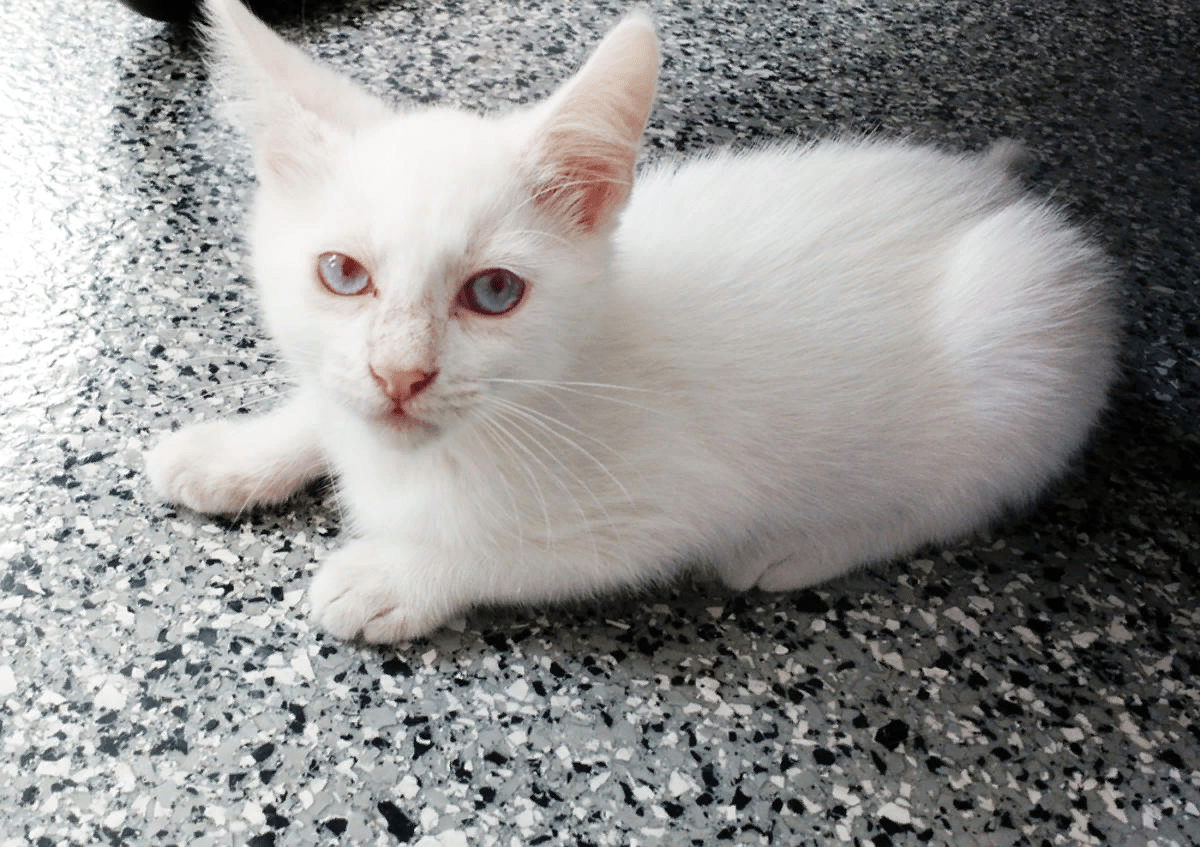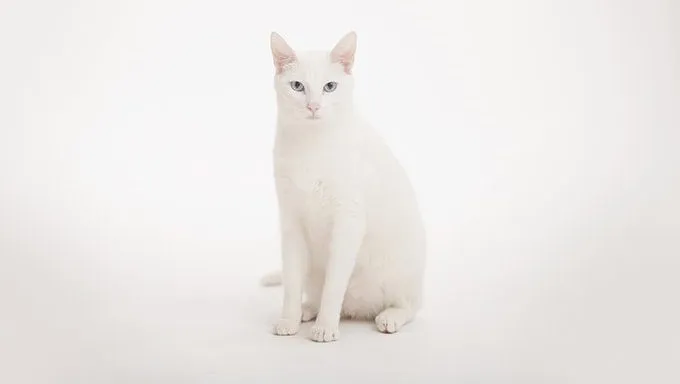Introduction
When it comes to feline companions, there’s a common misconception that albino cats are simply white cats. While it’s easy to mistake one for the other, there are distinct differences that set albino cats apart. Let’s dive into the fascinating world of albino cats, learn how to distinguish them from their white counterparts, and understand what makes these rare felines so special.
What is Albinism?
The Science Behind Albinism
Albinism is a genetic condition characterized by a lack of melanin, the pigment responsible for the color of skin, hair, and eyes. This condition is not just limited to cats; it can occur in various animals, including humans. In cats, albinism is caused by a recessive gene. For a cat to be albino, it must inherit two copies of this gene, one from each parent.
Different Types of Albinism
There are different degrees of albinism, but the most common types are:
- Complete Albinism: Total absence of melanin, resulting in white fur and pale blue or pinkish eyes.
- Partial Albinism: Reduced melanin production, which can lead to slightly darker fur and eye colors.
How to Identify an Albino Cat

Physical Characteristics
While white cats and albino cats may look similar at first glance, there are several key differences:
Fur Color
- Albino Cats: Their fur is always pure white due to the complete lack of pigmentation.
- White Cats: Their white fur is a result of a gene that masks other colors, but they still have pigment cells.
Eye Color
- Albino Cats: Their eyes are usually very pale blue or appear pink due to the reflection of blood vessels.
- White Cats: They can have blue, green, gold, or odd-colored eyes (one blue and one of another color).
Skin Color
- Albino Cats: Their skin, particularly around the eyes, nose, and ears, is very pale or pink.
- White Cats: Their skin is typically darker, and they may have some pigmentation around these areas.
Behavioral Traits
While albino and white cats can have similar temperaments, there are some subtle behavioral differences:
- Sensitivity to Sunlight: Albino cats are more sensitive to sunlight due to the lack of melanin, which offers some protection against UV rays. They are prone to sunburn and skin cancer.
- Vision Issues: Albino cats often have poor eyesight or light sensitivity, which can affect their behavior.
Caring for an Albino Cat
Health Concerns
Albino cats require special care due to their unique health needs:
Skin Protection
Because they lack melanin, albino cats are at a higher risk for sunburn and skin cancer. It’s essential to limit their exposure to direct sunlight and use cat-safe sunscreen if they go outdoors.
Eye Care
Albino cats often have sensitive eyes. They may benefit from living in an environment with controlled lighting to reduce discomfort and prevent vision problems.
Regular Veterinary Checkups
Regular vet visits are crucial for albino cats to monitor their overall health and address any potential issues early. Consult with your vet about specific needs and concerns related to albinism.
Providing a Safe Environment
Creating a safe and comfortable environment for an albino cat involves:
- Indoor Living: Keeping your albino cat indoors helps protect them from UV rays and other outdoor hazards.
- Comfortable Lighting: Use soft lighting to reduce eye strain and make their living space more comfortable.
Fun Facts About Albino Cats
Rarity
Albino cats are extremely rare due to the genetic combination required for albinism. Their rarity makes them unique and highly sought after by cat enthusiasts.
Historical Significance
In some cultures, albino animals, including cats, are considered sacred or bringers of good luck. Their unique appearance has fascinated people for centuries.
Celebrities of the Animal World
Albino cats often become stars on social media and in the pet community due to their striking appearance and rarity.
Albino Cats in Pop Culture
Famous Albino Cats
Albino cats have made their mark in pop culture, appearing in movies, TV shows, and even as beloved pets of famous personalities. Their unique look often lands them special roles and recognition.
Representation in Media
Albino cats are sometimes portrayed in media as mystical or otherworldly creatures due to their distinctive appearance. They captivate audiences and add a touch of magic to various stories and settings.
Common Myths About Albino Cats
Myth 1: Albino Cats Are Deaf
While it’s true that many white cats with blue eyes are prone to deafness, this is not necessarily the case for albino cats. The gene responsible for albinism is different from the one that causes deafness in white cats. Therefore, not all albino cats are deaf.
Myth 2: Albino Cats Are Weak and Unhealthy
Albino cats can live healthy, fulfilling lives with proper care and attention. Their health needs may be unique, but with the right care, they can thrive just like any other cat.
Myth 3: Albino Cats Are a Different Species
Albino cats are not a separate species. They are regular domestic cats with a specific genetic condition. They belong to the same species as other domestic cats (Felis catus).
How to Adopt an Albino Cat
Finding an Albino Cat
Given their rarity, finding an albino cat for adoption can be challenging. It’s best to check with specialized breeders, animal shelters, and rescue groups. Keep in mind that responsible breeders will prioritize the health and well-being of their cats.
What to Consider Before Adoption
Adopting an albino cat comes with special responsibilities:
- Health Care: Be prepared for potential health issues and regular vet visits.
- Living Environment: Ensure you can provide a safe, indoor environment with limited sun exposure.
- Commitment: Albino cats require dedicated care and attention, so consider your ability to meet their needs before adopting.
Adoption Process
The adoption process for an albino cat is similar to that of any other cat. It involves filling out an application, meeting the cat, and ensuring a good fit for your home. Some shelters may have specific adoption requirements for cats with special needs.
Conclusion
Albino cats are truly special, with unique characteristics that set them apart from white cats. Understanding these differences is essential for proper care and appreciation of these rare felines. If you’re lucky enough to have an albino cat, cherish their unique beauty and provide the care they need to thrive.
For more information on albino cats and their care, consult your veterinarian or check out resources from reputable animal organizations.
References:
What is the difference between an albino cat and a white cat?
An albino cat lacks melanin entirely, resulting in pure white fur, pale blue or pink eyes, and very pale or pink skin. White cats, on the other hand, have pigment cells and can have various eye colors and darker skin.
Are albino cats more prone to health issues?
Yes, albino cats are more sensitive to sunlight and can be prone to sunburn and skin cancer. They may also have vision issues, including light sensitivity. Regular veterinary checkups are essential to monitor their health.
Are albino cats always deaf?
No, not all albino cats are deaf. The gene responsible for albinism is different from the one that causes deafness in white cats. While some may have hearing issues, it is not a universal trait for all albino cats.
How can I protect my albino cat from the sun?
To protect your albino cat from the sun, keep them indoors as much as possible, provide shaded areas if they go outside, and use cat-safe sunscreen on exposed skin. It’s essential to minimize their exposure to direct sunlight.
Do albino cats have special dietary needs?
Albino cats do not have specific dietary needs related to their albinism. However, maintaining a balanced and nutritious diet is crucial for their overall health. Consult your veterinarian for the best diet recommendations for your albino cat.
Can albino cats see well?
Albino cats often have poor eyesight or light sensitivity due to the lack of melanin in their eyes. They may have difficulty seeing in bright light and may benefit from a living environment with controlled lighting to reduce discomfort.
How rare are albino cats?
Albino cats are very rare because they must inherit two copies of the recessive gene responsible for albinism, one from each parent. Their rarity makes them unique and highly sought after by cat enthusiasts.
Are albino cats a different breed?
No, albino cats are not a separate breed. They are regular domestic cats with a specific genetic condition that causes albinism. They belong to the same species as other domestic cats (Felis catus).
Can I adopt an albino cat from a shelter?
Yes, it is possible to adopt an albino cat from a shelter, although they are rare. Check with specialized breeders, animal shelters, and rescue groups to find an albino cat available for adoption. Be prepared for their special care needs.
How can I provide a safe environment for my albino cat?
To provide a safe environment for your albino cat, keep them indoors to protect them from UV rays and outdoor hazards. Use soft lighting to reduce eye strain and create a comfortable living space. Regular vet visits and proper skin protection are also essential.
- Best Hunter.io Alternatives for 2025 - April 19, 2025
- Best Lead411 Alternatives for 2025 - April 19, 2025
- Best Leadzai Alternatives for 2025 - April 18, 2025



